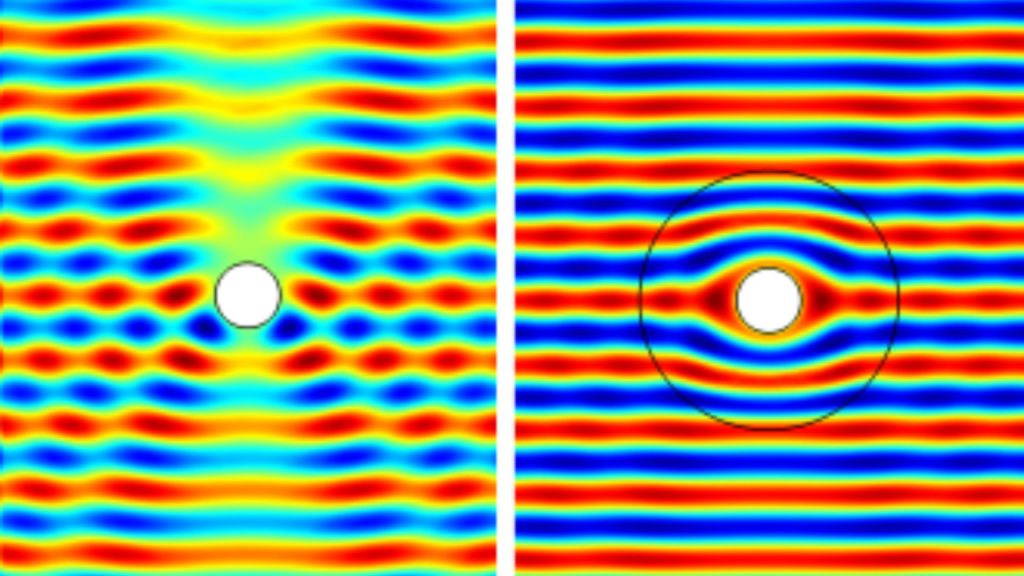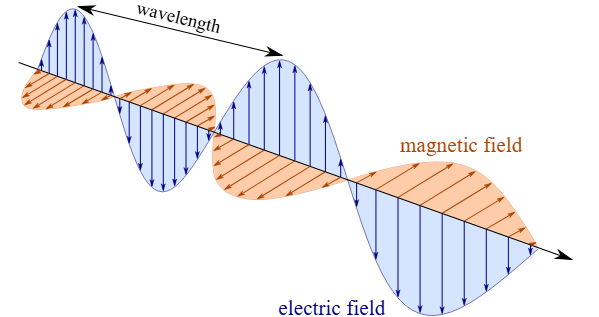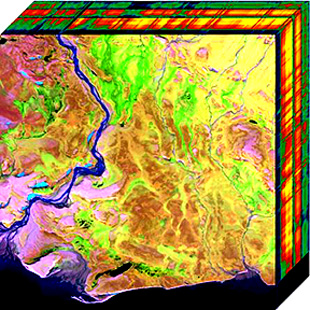
Imagine that the Earth is already covered in trillions of invisible, shape-shifting machines that are undetectable to the naked eye and conventional sensors? Such salacious claim, recently made by a just-retired NASA engineer, has ignited a storm of controversy among scientific and defense circles. The claim not only challenges what is currently possible but also uncovers profound questions about privacy, security, and the essence of reality.
While scholars study the possibility of such technology, discussion inevitably comes to the cutting edge of metamaterials, advanced surveillance, and the ethics of invisibility. In this article, we explore the science, speculation, and worldwide implications of the concept of stealth technology and how it may change our reality.

1. The Ex-NASA Engineer’s Chilling Revelation
The story began with a highly respected retired NASA engineer, who had a background of working on state-of-the-art space projects, who claimed that trillions of shape-shifting, camouflage machines cover the Earth. They stated in their report that these machines are so well hidden that mainstream detection tools become pointless. The engineer confessed that their discovery was the result of combining accidental sightings with focused research, yet went on to confess that the supportive facts are largely circumstantial.
The engineer’s willingness to wager professional reputation in the name of openness has stimulated both interest and suspicion. As the engineer outlined, the anomalies observed could not be explained on the basis of any known principles of science, prompting calls for a broad, more systematic investigation by the scientific community. The claim has, not surprisingly, triggered a healthy controversy about the boundaries of technological possibility as well as the demand for open science.

2. Metamaterials: Science of Cloaking
At the heart of modern cloaking speculation lies the science of metamaterials human-created structures that are capable of manipulating electromagnetic waves in ways that natural material is not. As outlined in a recent survey, metamaterials can achieve negative refractive indexes, perfect lensing, and even electromagnetic invisibility. These are not abstract curiosities; they have already been demonstrated in lab experiments, resulting in devices that can bend light around objects and render them invisible to certain wavelengths.
Recent progress has applied such function to flexible and tunable devices, including those enhancing MRI imaging by the confinement and enhancement of electromagnetic fields at subwavelength scales. As described in a 2025 publication, “Metamaterials are artificially constructed materials with exotic properties, e.g., a negative refractive index, negative permeability and permittivity, negative cloaking by Poisson ratios and optical effects, etc., which do not exist in nature.” The pace at which these technologies are developing suggests that mass-produced, general-purpose cloaking devices are less impossible than thought.

3. Surveillance and Security: The Double-Edged Sword
If devices that are cloaked in this way do actually exist, then world security and privacy implications would be staggering. As one researcher explained in a lengthy report on new technology, the coming together of advanced sensors, autonomous tech, and cloud analysis is already revolutionizing surveillance potential. Cloaked devices could, in theory, enable the collection of unparalleled volumes of data, tracking movement and environmental changes or monitoring individuals unseen.

But this same technology poses enormous threats. Without proper regulatory frameworks and moral guidance, this type of technology can be used for industrial espionage, military domination, or even massive data violations. On one ethics review, “Having vague and inconsistent ethical guidelines leaves potential gray areas leading to privacy, ethical, and data breaches that must be resolved.” The challenge is in balancing innovation with the protection of civil liberties.

4. The Role of Artificial Intelligence in Cloaking and Detection
The design and deployment of newer cloaks increasingly rely on machine learning and artificial intelligence. Deep neural network algorithms are now being used to learn optimal metamaterial geometries for electromagnetic responses, so adaptive surfaces and cloaks can be prototyped rapidly. Generative models such as VAEs and GANs can be used to design and model materials with the properties of invisibility that are desired, while reinforcement learning is used to optimize their performance in changing environments.
AI is further being employed to counter cloaking by enhancing detection methods. As a Nature Photonics review continues, “Deep learning has several fundamental strengths, making it complementary to or superior to traditional methods.” The cloaking vs. detection technology arms race keeps heating up, and AI takes center stage for both defense and attack.

5. Hyperspectral Satellites: Unmasking the Invisible
While cloaking technology is able to evade visible light, hyperspectral imaging satellites are at the forefront of detection. The satellites collect data by way of hundreds of spectral bands, allowing for analysts to see unique material signatures even those obscured in plain sight. Hyperspectral imaging is also a precious tool for defense and intelligence agencies, capable of locating camouflaged military targets, buried bunkers, and even chemical weapons. Satellite miniaturization in recent times and artificial intelligence-facilitated data analysis have made these capabilities more ubiquitous and effective. “Passive spectral sensors hold promise for detecting and identifying camouflaged and hidden targets in clutter,” claims a technical overview. The interplay between cloaking and hyperspectral sensing is in the spotlight today in the evolution of modern surveillance.

6. Ethical and Regulatory Challenges
The frenetic development of new sensing and cloaking technologies has long since outrun the development of ethical and legal context. As a recent policy analysis noted, “The problem with emerging technologies is that it takes years to understand the types and impacts of the threat landscape, as well as the risks it is susceptible to.” This delay puts society at risk of abuse, from unauthorized surveillance to violations of the social contract on privacy and autonomy.
Purported efforts at regulating these technologies such as the EU Artificial Intelligence Act and GDPR are encouraging but uncertain. International standards and open monitoring are increasingly an urgent requirement, since the potential consequences of unregulated cloaked devices may be vast and irretrievable.

7. Cultural Impact and the Allure of the Unknown
Beyond the moral and technical controversies, the idea of secret, shape-shifting gear has excited popular imagination. Popular media reports, UFO festivals, and science fiction all form a cultural discourse that blurs the border between science and legend. As BU’s Joshua Semeter averred, “Extraordinary claims require extraordinary evidence. We are still awaiting the evidence.” The allure of invisibility, monitoring, and alien technology continues to inspire skepticism and wonder.
Aside from the validity of the ex-NASA engineer’s claims, the debate today is fueling scientific interest and technological innovation. It also reminds us that seeking to understand and sometimes master the unseen forces that encompass us is as old as mankind itself.

The case for hidden devices is more than a matter of technology on the drawing board; it reflects our hopes, fears, and dreams as a nation. Whether or not such hidden systems actually exist or are imagined, their history calls upon us to examine the boundaries of science, the responsibilities of innovation, and the enduring allure of the unknown. As the surveillance sciences and metamaterials continue to develop, vigilance, candor, and prudent stewardship have never been more important.


